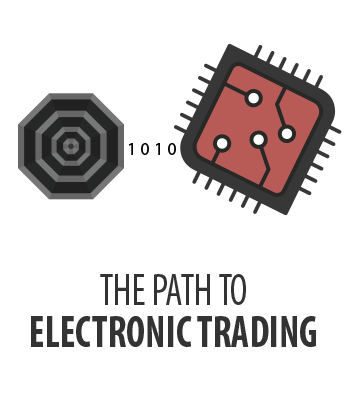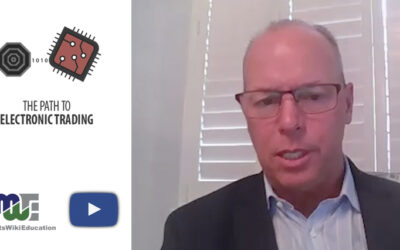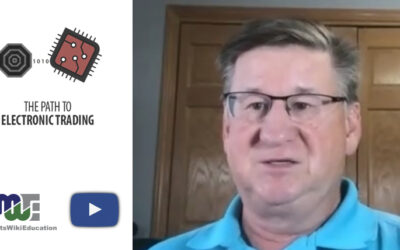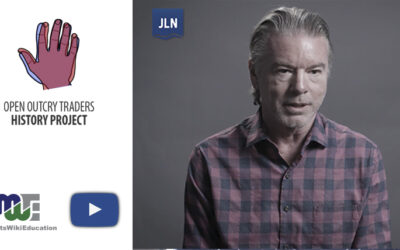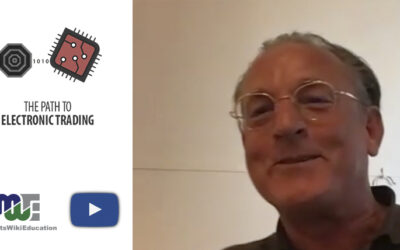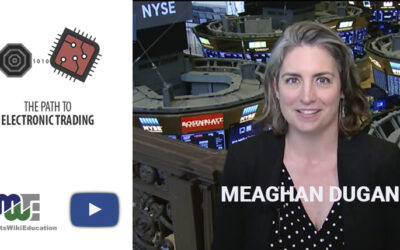JLN INTERVIEWS VETERAN TRADING, TECHNOLOGY AND BROKERING EXECUTIVE FOR THE PATH TO ELECTRONIC TRADING SERIES
Alex Lamb wanted to be a helicopter pilot in the U.K. Royal Airforce. He never had the chance, but he strategically landed opportunity after opportunity in the banking, trading and related technology businesses during his long and varied career.
Lamb even helped launch the firm Trading Technologies, outlining to then contractor Gary Kemp what he wanted for a new electronic trading screen that would allow brokers to enter orders for multiple accounts and be able to track them more efficiently. That was the genesis of the screen that became Trading Technologies’ desktop offering.
John Lothian News interviewed Lamb for the Path to Electronic Trading series. Although Lamb did spend some time on the London futures trading floors, including on the first day of The IPE and the first day of LIFFE, it is his pursuit of technological solutions to the myriad of problems facing brokers and traders engaging in the developing European-listed derivatives markets that defines his career.
Lamb started with one of the largest sugar brokers in London – later renamed Sucden – at the age of 18 as a back-office junior. He ran the back office for a number of years before his boss lent him to the marketing group of the London startup financial futures exchange LIFFE.
He was given the brief of educating the “stodgy” City of London traders on how to trade financial futures. He developed a trading simulator to help them learn how to enter orders into LIFFE’s markets. He even successfully encouraged Reuters to open an API to take money market data, run it through a calculator and present it as futures data.
After the first day of trading on LIFFE, Lamb said he was greeted with 30 to 40 boxes of IBM punch cards, representing a week of trading and 10s of thousands of punch cards. Realizing he did not want to spend his career as a file clerk, he quickly sought a solution for the paper onslaught.
After solving the punch card issue, he delved into the brokers package system offered by the exchange to use the data from the punch cards to manage the daily out-trades, as he was responsible for the daily dealing statement.
Lamb then started working with an accounting system for use as a back-office system, which brought home the differences between the two.
To compute the value and cost of some trades, he used a handheld Casio calculator/computer to program the value of swaps using CME price data. Subsequently, brokers in Asia started reaching out to him to give them prices of swaps because of his quick ability to derive swap prices using code he had programmed into the Casio computer.
He began sending orders into back month Eurodollar futures at the CME using his calculations and making markets in the back months of SIMEX Eurodollar futures, which were fungible to CME Eurodollar futures.
After 18 months of this, he was invited to join the bank Baring Brothers to help establish a trading operation on LIFFE.
In early 1987, he was approached by Nomura to do what he had done for Barings with Japanese Government Bonds (JGBs). At Nomura he had an error which found the firm with a 200 lot JGB position they did not want. The broker in the pit was able to slowly and stealthily get out of the position with about a 50,000 pound gain. The error taught him a valuable lesson.
He was trading on DTB day in 1992 when “The Snake” or EMS currency system fell apart. He learned that even though the DTB electronic trading system was not very fast, it was faster than the open outcry system in London. It was then he determined that if they were able to improve the DTB systems, they would be able to take on the open outcry markets at LIFFE.
He spent the next 2½ years at Fimat, building a brokerage business on the DTB. During that time he needed to integrate the DTB trades into the GMI back-office system. Andreas Preuss, who later became the CEO of Eurex, recommended a programmer by the name of Gary Kemp for the project.
Lamb hired Kemp, who built what Lamb thinks was the first real-time data delivery system from DTB to GMI using an AS400 computer. An AS400 computer in Frankfurt would talk to an AS400 computer in the US using a “skinny” 16K leased line. The AS400 in Frankfurt would also drop the data into a bookkeeping system in Frankfurt running on the same computer.
After completing the GMI project, Kemp asked Lamb if there were any other programming projects he needed. Lamp said yes, he wanted a front-end trading screen. Kemp had built the SOFFEX front end that the DTB used and was “affronted” by Lamb’s request for a new one. But Lamb needed a screen that worked for a broker, not a single trader trading a single account.
Lamb gave Kemp two drawings, one for an order book to filter and order the electronic orders for a client, and the other a trade book to be able to summarize completed trades for a client.
Once the front-end trading system was implemented, Lamb’s brokerage operations errors went to zero. Those two screens became the basis of the Trading Technologies desktop in 1993.
